News
Naval Systems Research Center
Outline
The Naval Systems Research Center conducts research and technical evaluation of naval ships, underwater weapons, acoustic equipment, magnetic equipment, and underwater electric potential equipment.
Public information video of Naval Systems Research Center(2021 edition)NEW!
(Click the link to the ATLA Official Chanel on YouTube)
Brochure of Naval Systems Research Center(FY 2021) (PDF)
Leaflet of Iwakuni Maritime Environment Test & Evaluation Satellite(IMETS)(PDF)
Undersea Warfare Technology Division
Research on the assessment of Anti-Submarine Warfare (ASW) and Mine Counter Measures (MCM), decision support systems for ASW, and the underwater acoustics.
Unmanned Maritime Vehicles and Underwater Weapons Technology Division
Research on Unmanned Maritime Vehicles(UMV), underwater weapons, and minesweeping equipment.
Naval Platform and Signature Technology Division
Research on the signature reduction of naval ships, underwater weapons, and minesweeping equipment. Field test of those prototypes and the evaluation of them.
Kawasaki Branch
Research on magnetic field and Underwater Electric Potential (UEP).
Iwakuni Maritime Environment Test & Evaluation Satellite
Research on Environment Test & Evaluation of Unmanned Maritime Vehicles(UMV).
Research
Large Towing Tank
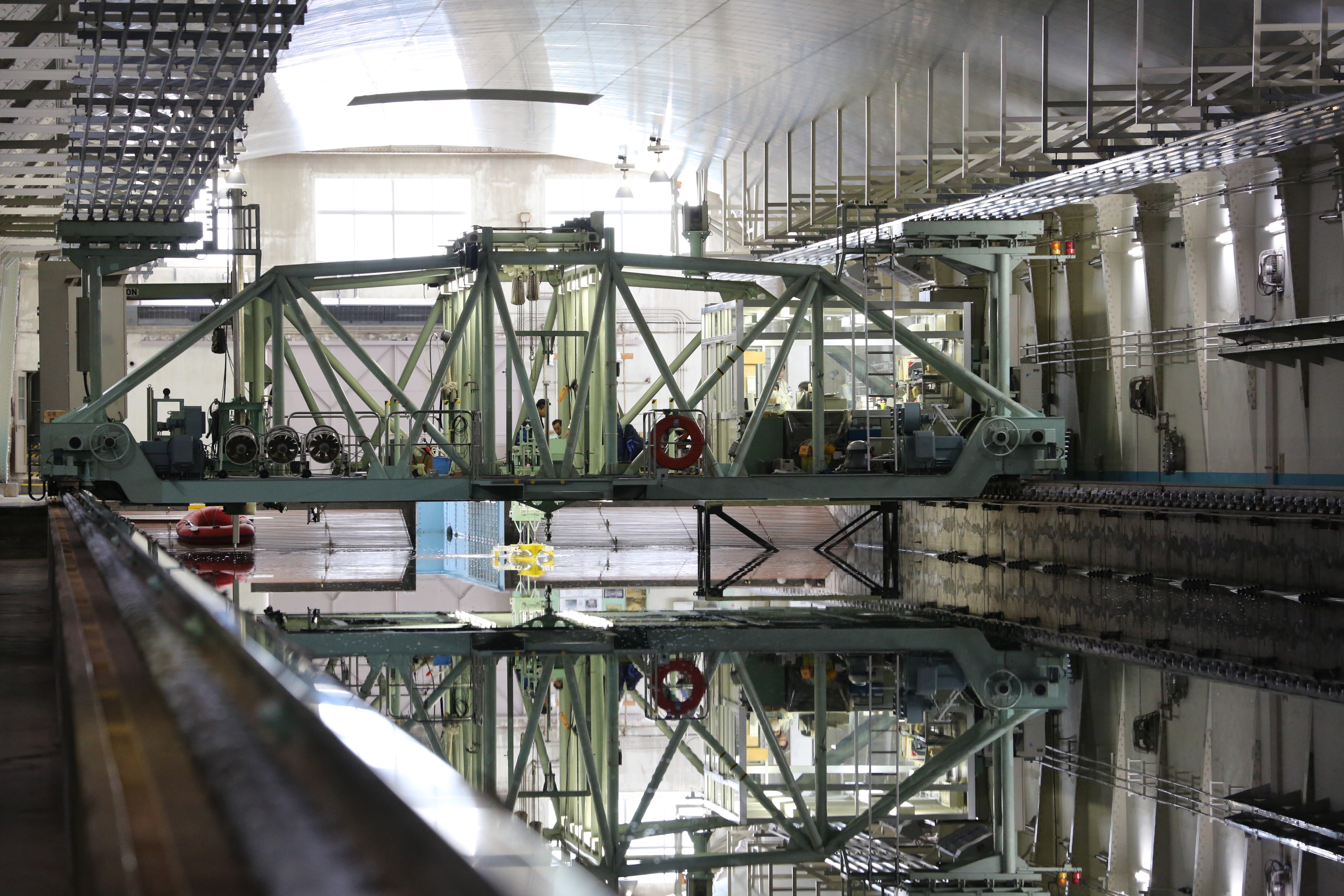
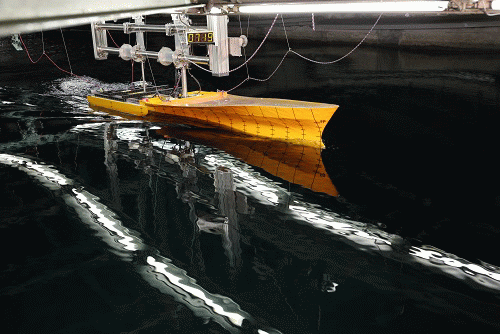
The Large towing tank is a facility to evaluate hydrodynamic performance for model ships. It is 250m long, 12.5m wide, 7m depth, and has a towing carriage runs up to 8m/s. Also it has a wave maker to conduct tests in waves. The movie below shows a measurement of ship motion of a high-speed trimaran ship in waves.
Flow Noise Simulator (FNS)

The Flow Noise Simulator (FNS) is a large circulating water tunnel with very low background noise level and enables us to evaluate both hydrodynamic and hydroacoustic properties of ships, submarines, and underwater weapons with the use of scale models or real-size ones. No other circulating water tunnel in Japan is as large as the FNS, which is one of the best circulating water tunnels in the world for its low background noise level.
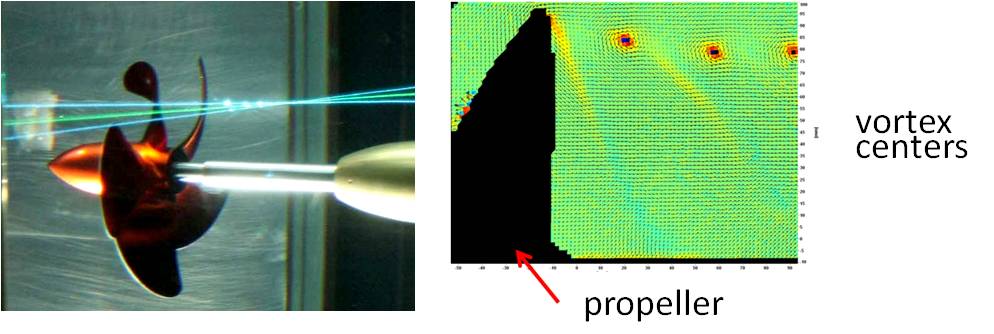
The figure at the left shows the experimental setup for the measurement of propeller flow field using a laser Doppler velocimetry. The right figure shows the simulated flow field behind the propeller model. Vortices trails from the propeller tip can be observed clearly in the right figure as red dots. In the FNS, precise flow measurements are performed by means of laser Doppler velocimetry and article image velocimetry. These results contribute to the design of noise reduced naval propellers.
Continuous Active Sonar

CAS, Continuous Active Sonar, will be able to detect and continuously trace the underwater targets by using the wide-band and continuous acoustic waves, which reduce the reflected sound at the sea bed and the surface, and by applying the corresponding signal processing. We expect this enhanced sonar will be effective also for the underwater threatens with improved stealth performance.
Large Displacement Unmanned Underwater Vehicle (LDUUV)
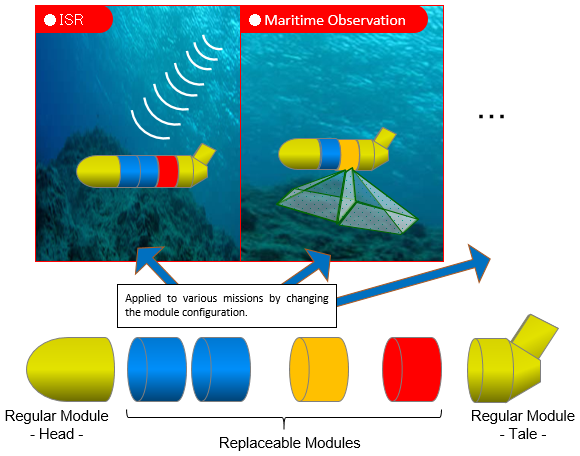
Modular architecture designed LDUUV will be able to operate various kinds of missions such as deployment of underwater equipment by changing the module units.
Quiet Propulsion System for Torpedoes
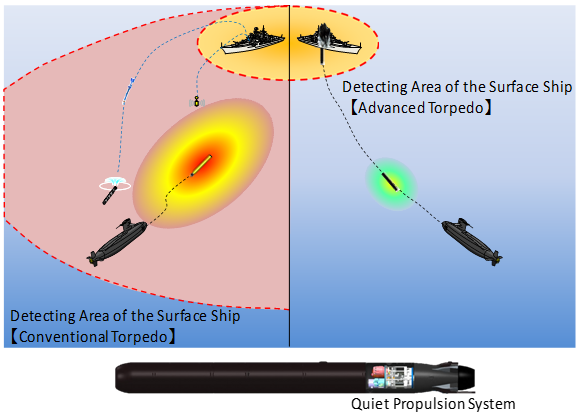
Quiet Propulsion System for torpedoes will be able to attack even the future ships that will obtain enhanced performances of detection and antisubmarine ability.
UEP* Reduction Technology
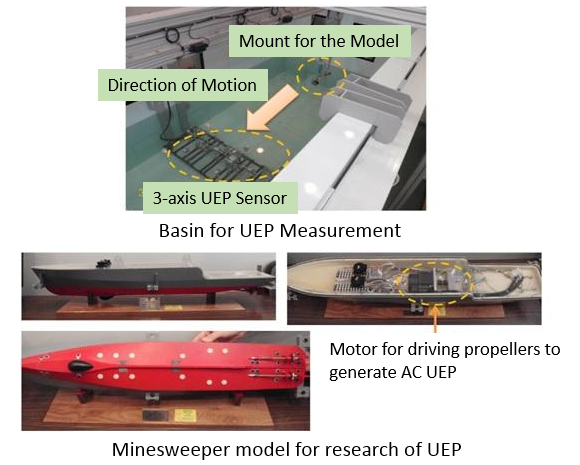
In order to improve ships' anti-detection capability against sea mines with UEP* sensor, their UEP signature must be reduced. For this purpose, we recently built a minesweeper model, which can simulate the UEP signature around the ship, and examined the basic characteristics in our UEP test basin.
*UEP: Underwater Electric Potential


